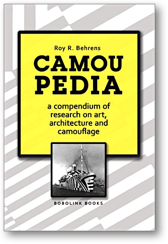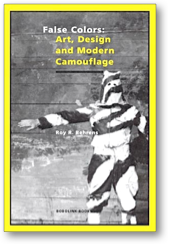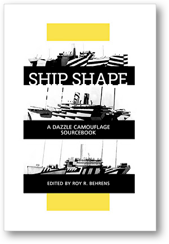



![What was it like to be a student in Sherman's flash lab class? "You couldn't think," recalled one student, "you just did it." The whole idea, he continued, was "to facilitate spontaneous drawing solely from the stimulus of what you saw. You're in the dark and you would see something for a tenth of a second and then this big block…I remember that the darkness seemed to bracket all the confounding cultural and social interaction in the classroom."
In advance of the course, the visual acuity of each participating student was measured, then measured again at the end of the course. By those scientific testing methods (conducted by a faculty member from the School of Optometry), it was found that surprising improvements took place in the general perceptual abilities of the students. In fact, those improvements (86 percent in peripheral activity; 400 percent in stereo peripheral activity) were so pronounced that considerable doubt was voiced about the validity of the test results, until the experiment was repeated and equivalent scores were reported in a different test group.
Near the end of the course, one of Sherman's best flash lab students was inducted into military service. During the student's physical, he was asked to read the letters from an eye chart. "The student took one look at the chart," Sherman remembered, "turned his back, and read accurately the rows of letters down to the 20-18 central acuity range. The poor sergeant was baffled. The student had developed eidetic imagery."
As a result of its proven success, Sherman proposed that his flash lab method be used in training dentists, in clinical and educational psychology, therapy, reading, music, architecture and physical education.
His unorthodox teaching methods were brought to national attention in 1947, when he collaborated with two OSU colleagues, an educational psychologist named Ross L. Mooney, and an optical physiologist named Glenn A. Fry, on a book entitled Drawing By Seeing: A New Development in the Teaching of the Visual Arts through the Training of Perception (New York: Hinds, Hayden and Eldredge, 1947). [The book has been out of print for many years, but copies are more or less easy to find online, at large public and university libraries, or through interlibrary loan.]
But the most widely publicized use of Sherman's methods occurred in 1948. During the previous season, the OSU football team had lost an unfortunate number of games, and Wesley Fesler, the head football coach, was under unusual pressure from fans. The coach's wife was receiving unfriendly anonymous calls, and there was wild and widespread chatter about running the coach out of town.
Fessler and Sherman were colleagues and friends. As the situation worsened, Sherman apparently called the coach and suggested that they could enliven the team through extensive flash lab training. Thereafter, every afternoon (believe it or not!) selected members of the football team (the backfield, the ends, and the linebackers) reported to Hoyt Sherman's flash laboratory to make drawings in the dark before moving on to the practice field.
Sherman was not a particularly tall person, and, in general, he had more of an artist's sensibility than that of an athlete. Being resourceful, however, he adapted the flash lab procedures somewhat to comply with the needs of the skeptical team. For example, he soon abandoned the drawing exercises, and replaced them in the lab with a wire cage that swayed at the end of a cable. Standing in total darkness, the players were instructed to throw a football into the cage (which was constantly swaying) while it was illuminated for only one tenth of a second.
"Then it was time to take them onto the field," Sherman recalled years later in an interview, "so I had to go before the whole football team in a big room, not quite sure what I was going to say. I said, 'Well, there's not a thing to throwing a forward pass,' and I reached into my pocket and I picked up this marble which was about the size of my thumb. I was about 45 feet away from the end of the room, and I hit the doorknob right smack in the middle. That convinced them."
He was able to hit the doorknob, Sherman explained, because he had learned to see generalized figure-ground patterns, to focus equally on things (figures or solids) and the spaces in between the things (grounds or voids). "Customarily," he continued, "we pay attention only to the thing we propose to act upon—in my case, the doorknob," or, in the case of the football players, the receiver to whom they were passing the ball. "I explained to the team that attention to the field of 'solids' or players and 'voids' or openings is the most effective way to play football well."
g
Then, when he actually got them outside on the football field, he unveiled his latest invention, a "flash helmet,” consisting of a modified football helmet with a cord attached to a hinged visor-like shutter. By pulling the cord while standing behind the passer, Sherman could limit the view of the field to split second flashes—just as he had in the flash lab. The passer would see the receiver during that fraction of a second, then throw while the shutter was actually closed. By that method, the passer would not be allotted the time to focus on nonessential details, but rather (as Rembrandt had found earlier) on figure-ground patterns or visual gestalts.
There was a dramatic improvement that year in Wes Fessler's football team, and calls to his wife were ecstatic in tone. There was an especially evident gain in the accuracy of the team's quarterback, Pandel Savic, who was regarded by Sherman as his finest flash lab student.
No one knows the true extent to which Hoyt Sherman's teaching methods were actually successful. Some of my teachers, when I was an undergraduate art student, had been Sherman's students at OSU, as had the artists Roy Lichtenstein. and Michael Torlen. But in the late 1940s, the players, the press, and the public believed (at least for a season) that the flash lab was largely responsible for the dramatic reversal of fortune for the Ohio State University football team.
• • •](DrawingInDark3_files/shapeimage_5.png)






Above Detail of a photograph of Hoyt Sherman, made in 1981. He died later that year from complications following a stroke.
Above OSU quarterback Pandel Savic in the late 1940s. Sherman thought that Savic was his best flash lab drawing student. In 2009, Savic was inducted into the Ohio State Athletics Hall of Fame.
Left Hoyt Sherman (right) with Adelbert Ames Jr. (center) at OSU (c1948). Ross Mooney is on the left, and a lab-sized Ames Room is in the background. Far left is a drawing of the same room.
![Drawing in the Dark:
Hoyt Sherman and the Flash Lab
at Ohio State University
[continued | page 3 of 3]](DrawingInDark3_files/shapeimage_7.png)

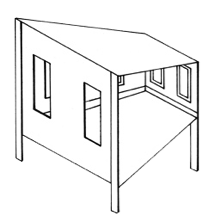
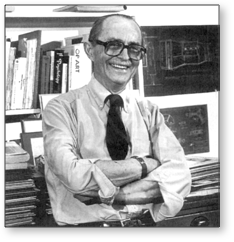

![Stanley Madeja—
“[Adelbert Ames Jr.] had seen the first draft of Drawing by Seeing, and he invited [Ross] Mooney and Sherman to New York to witness two of his visual demonstrations…Soon after returning to Columbus, they were invited to [Hanover NH] for two weeks to observe and discuss Ames’ visual demonstrations.”](DrawingInDark3_files/shapeimage_9.png)


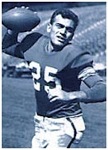
One might assume that Hoyt Sherman is a highly unusual name, maybe even unique. As it turns out, there was another Hoyt Sherman from Ohio. He was an American banker and politician from Lancaster OH, and the brother of General William Tecumseh Sherman, who was much hated in the South. That Sherman spent much of his adult life in Des Moines IA, and his mansion (now a museum and arts center) is called the Hoyt Sherman Place. In 2003, I wrote to Hoyt L. Sherman’s wife, Rachel, and asked if there was a connection between the two Hoyts. She replied: “It’s amusing to hear again about that Hoyt Sherman Place in Des Moines. For years, we have heard of it from who friends who have gone through that city. Hoyt was from Alabama, the Deep South, and has no connection with General Sherman, who was from Ohio.”—RB

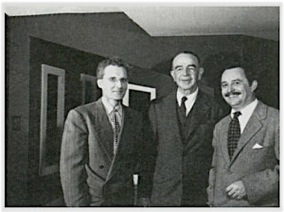
It’s interesting that OSU football coach Wes Fesler (or at least his foot) was the subject of a now famous “stop-action” stroboscopic photograph of a football being kicked, made in 1934 by MIT photographer Harold (Doc) Edgerton. It’s titled Wes Fesler Kicking a Football.
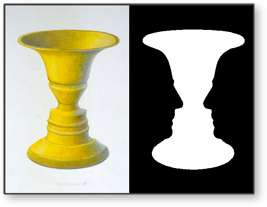
Left Public domain images of reversible figure-ground (or solid-void) phenomena. The same idea has been used in puzzle pictures throughout history, but the Danish gestalt psychologist Edgar Rubin is usually credited with having studied it extensively. It’s sometimes called the Rubin vase.


Over the years, I have gained considerably from conversations with Glenn Fry (Hoyt Sherman’s OSU colleague and collaborator) and a number of Sherman’s students, among them Marjorie Campbell, David Delafield, Kenneth Gogel, and Evan Kern.—RB


Hoyt Sherman’s correspondence and other papers are in the collection of the Ohio State University Archives in Columbus OH.







